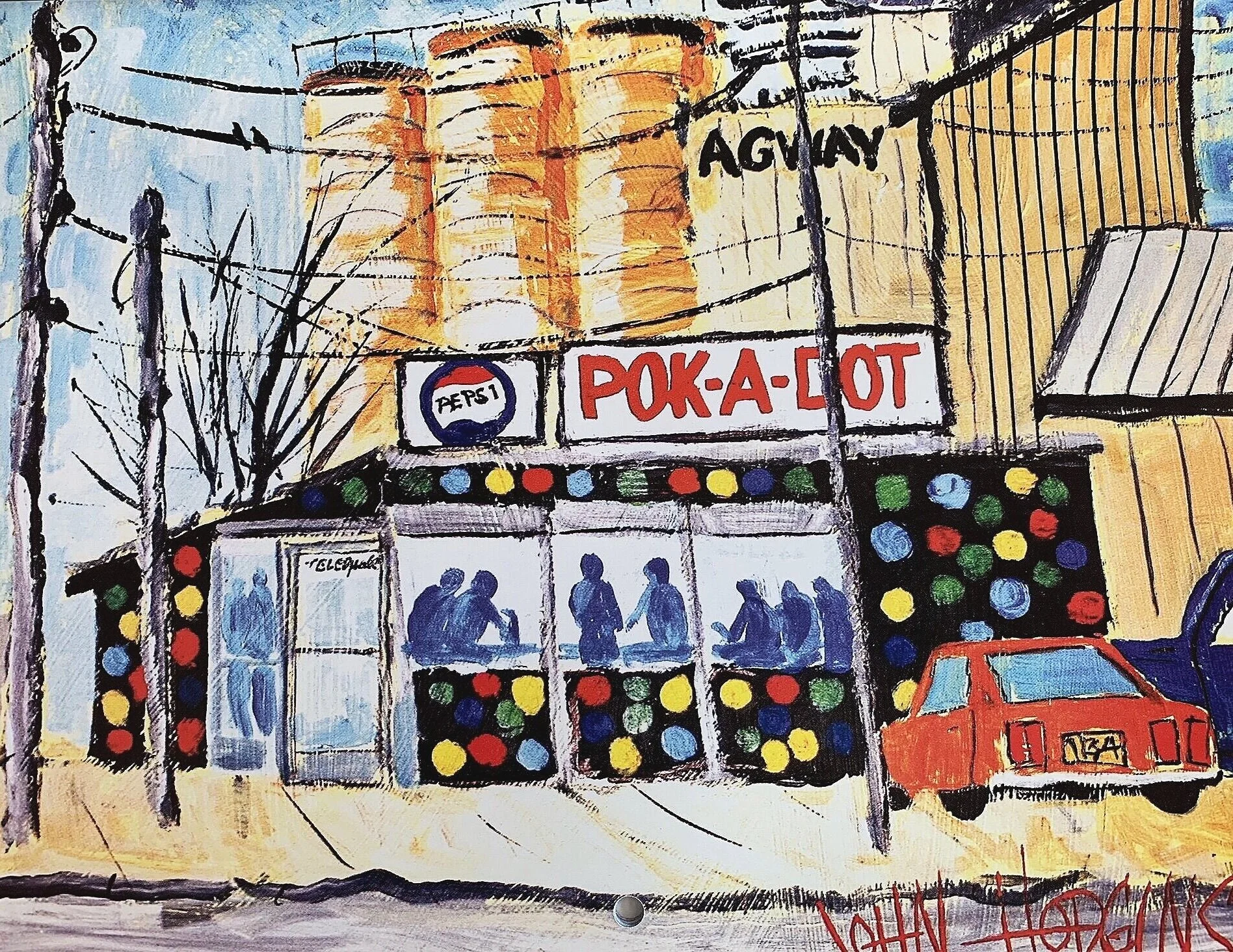THE STORY
They dug the foundation for the 20-foot by 20-foot “box type” wooden building in April 1953. It was completed on June 6, 1953. The sides of the building housed flaps which were pulled down at the end of the business day. They were painted black with multicolored polka dots. The idea for its name the “Pok-A-Dot” originated when they saw a house painted with polka dots.
The first day the Pok-A-Dot opened, Philly and Trigger were ready with the cigar cash box, hot dogs and hamburgers for 20 cents and free ice cream. At the end of their first day the cigar cash box was overflowing with money. The tired, excited partners were guessing how much money they made at the grand opening. They thought at least $500. With eagerness they began to count all of their money and were surprised that they made only $85.
Every building has a story. The Pok-A-Dot has one that involves family, friends, bands, railroad tracks, 1950s decor and thousands of customers. All could add a page to the story of the Dot. My page would be going to the Dot in the ’60s with my brothers and sisters and fighting over the swivel stools at the counter. Today when my brother and sister’s families come home, the first place they want to eat at is the Dot!
Prior to the establishment and construction of the “Pok-A-Dot” restaurant at the corner of Liberty Street and Ellicott Street in Batavia, there was a bandstand that occupied the current parcel of land. It was used for band concerts for the neighborhood residents. With the help of Congressman Harold Ostertag and John Gioia, owner of Gioia’s Drug Store, the property was leased to Philip Pastore and Joseph Marone. They built what has been known as the Pok-A-Dot Restaurant.
Added to the original menu of hot dogs, hamburgers, ice cream and ice cold root beer served in frosted mugs came “Roast Beef on Weck” and a pepper and egg sandwich (the first in Genesee County). As the business grew, more items were added to the menu. The cooking of the famous “Beef on Weck” began in Leona’s kitchen, along with pasta fagioli from the very infancy of the Dot.
The railroad tracks ran right behind the new Pok-A-Dot building. The tracks were so close you could almost touch the train as it went by. The workers for the railroad enjoyed the Dot and would park the train down by Swan Street, unhook the engine and ride it to the back of the Dot and go in for lunch.
Eventually, the building was enclosed with windows which were removed at the beginning of the warm weather. In 1961 an enclosed dining room was added with red tables and wrought iron chairs. Added to the 1950s decor was a juke box with the small boxes on the counter.
The Pok-A-Dot became a place for many famous celebrities to sit and unwind after their performances across the street at the well known Roman Room Restaurant. People like Al Martino, Julius La Rosa, Tony Pastore, Dick Contino and many well-known band leaders were among them.
The Pok-A-Dot has been featured in the book Sunlight Dialogues which was written by Genesee County’s most famous author John Gardner who frequented the restaurant as a young man. Each year in October the Pok A Dot hosts an evening of readings for the John Gardner Society from the great author’s books. Author and sometime reader at these gatherings, Bill Kauffman, stated, “The Pok-A-Dot is the literary capital of Culinary Batavia.” The Pok-A-Dot has also been immortalized in the painting and calendar sketches of Batavia’s well-known artist, John Hodgins. Wanda Frank, a radio personality for WBTA, made a CD, “Grandpa’s Home for Christmas” that mentions the Pok-A-Dot in her radio play. It seems that the Pok-A-Dot is the setting for more than just a good meal.
To this day, people who grew up in and around the area and then moved away to different parts of the country return and make a special stop to enjoy the “Beef on Weck” for which the Dot has been famous in the Western New York region for over 67 years.
“LET’S MEET AT THE-DOT”
229 Ellicott St, Batavia, NY 14020
585-343-6775





